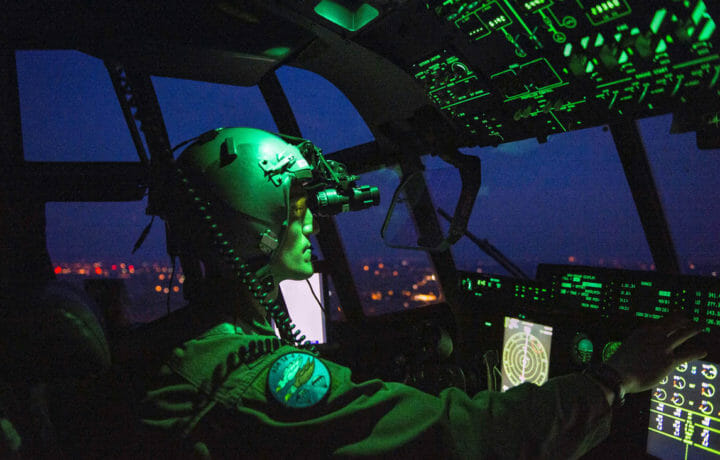The United States Air Force continues to face a serious shortage of pilots and is now looking at new ways to bolster its number of fliers while also creating a more diverse force in the process. A year ago, it was reported that the service had a pilot shortfall of about 2,100 or roughly 10% of the 21,000 pilots needed to execute the National Defense Strategy.
Calling on Civilian Pilots
Last summer the Air Force introduced a variety of efforts including the Pilot Training Next virtual reality (VR) and artificial intelligence (AI) program. While such efforts will continue, the Air Force is now taking another approach, and last month it began to develop a program to exempt civilian pilots from some military training, yet still allow them to become officers and fly aircraft for the service.
“The most important thing on that program is you still have to be willing to fight and kill and potentially die for your country to serve as an Air Force officer,” explained Maj. Gen. Craig Wills, the 19th Air Force commander. “And that’s a pretty big lift.”
Air Education and Training Command (AETC) is tasked annually with sending 1,500 pilots into the Air Force, but last year produced just 1,263 pilots. That was actually down from the 1,279 pilots from a year earlier – due in part of the novel coronavirus pandemic, which may have cost the program some 120 pilots.
While considering civilian-trained pilots for the Air Force, AETC has them go through a specially developed assessment methodology that includes an oral exam, written exam, and even a series of flight checks in a similar. That helps determine how much Air Force Training the civilian-trained pilot may need.
“Somebody who is exceptional and extremely well qualified might be able to bypass undergraduate pilot training altogether,” Wills added. “We would put those folks through an Air Force fundamentals course … to bring them up to speed on Air Force differences, teach them how we fly, teach them the things that they need to know to make a difference.”
The Three Rs
Last month the Air Force leadership had already signed off on a new plan that sought to develop a more diverse pilot corps by 2030, and provide a more level playing field in a profession that has largely been dominated by white men. The program seeks to grow greater opportunities for women and minority airmen among the Air Force’s premier professions, including manned and unmanned aircraft pilots, but also air battle managers, and combat systems officers.
The goals of these efforts fall into what has been described as three categories: recruitment, retention, and the removal of barriers to advancement that many minority airmen all too regularly face. This will include addressing the issue of recruitment even earlier by beefing up Junior Reserve Officer Training Corps (JROTC) and Civil Air Patrol (CAP) programs, while putting a greater emphasis on the targeting of underrepresented groups via social media and other marketing campaigns.
According to a report from The Air Force Times, the service further hopes to increase the number of events with those underrepresented youth by some 300% by fiscal 2025, with as many as 300 engagements a year. JROTC shows aim to further grow from just 120 in 2018 to 500 by 2023.
While federal law bans the setting of recruitment targets to meet a quota, this is actually about finding new places to seek out previously untapped talent, such as schools with science and technology programs that already have largely minority students.
This past March, AETC in partnership with the 19th Air Force, also hosted its Flying Training Virtual Industry Days at Joint Base San Antonio-Randolph. The online event provided an overview of the current state of the Air Force flying training, while it sought industry insight and perspectives of how to address the pilot shortages while improving the Pilot Production programs.
The virtual event had more than 100 personnel registered from 43 companies.
Keeping the Pilots Flying
Getting potential talent is just one part of the issue. Retention is also important, and to that end, the Air Force has set a plan in motion to create a mentorship program that would be far more focused on bringing up minority and female applicants to rated aircrew positions.
Those efforts would ensure that ROTC, Officer Training School, and the U.S. Air Force Academy all ensure that minorities are prepared for such highly-rated careers.
However, at the end of the day, it is still about finding the talent, not simply about diversity.
“We want the best candidate,” explained Wills. “We have no intention of getting anything but the best candidates, but we have to make sure we’re using the right measures. What I want is people who are willing to work as a team, people who have courage and grit and determination and resilience.”
Show Them the Money
To help ensure the shortage doesn’t get worse the Air Force is opting to use another retention effort by offering bonuses to pilots to stay in the service. As with past programs, the Air Force has also announced it would offer up to $420,000 in aviation bonuses over 12 year for some airmen.
This includes active-duty bomber, fighter, mobility, special operations, and combat search-and-rescue fixed-wing pilots whose initial contract commitments were set to expire this year. Those pilots are eligible to receive annual payments of $25,000 for five- to seven-year commitments, or $35,000 for eight- to 12-year commitments.
Additionally, those who choose eight- to 12-year contracts may even request a $200,000 upfront payment.




